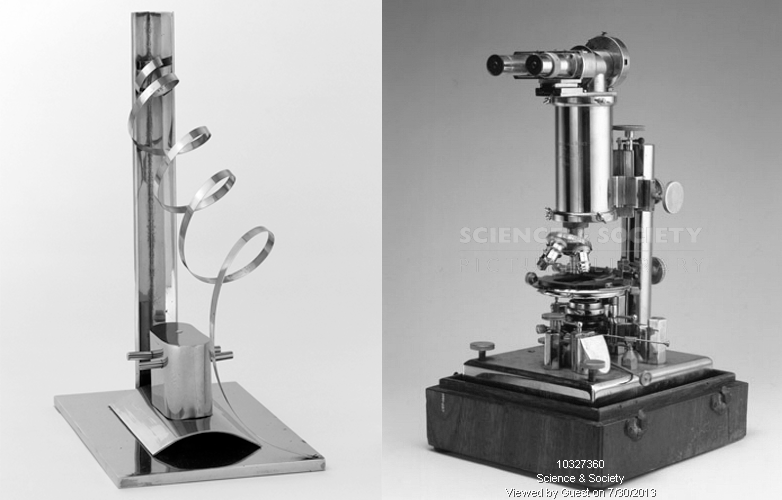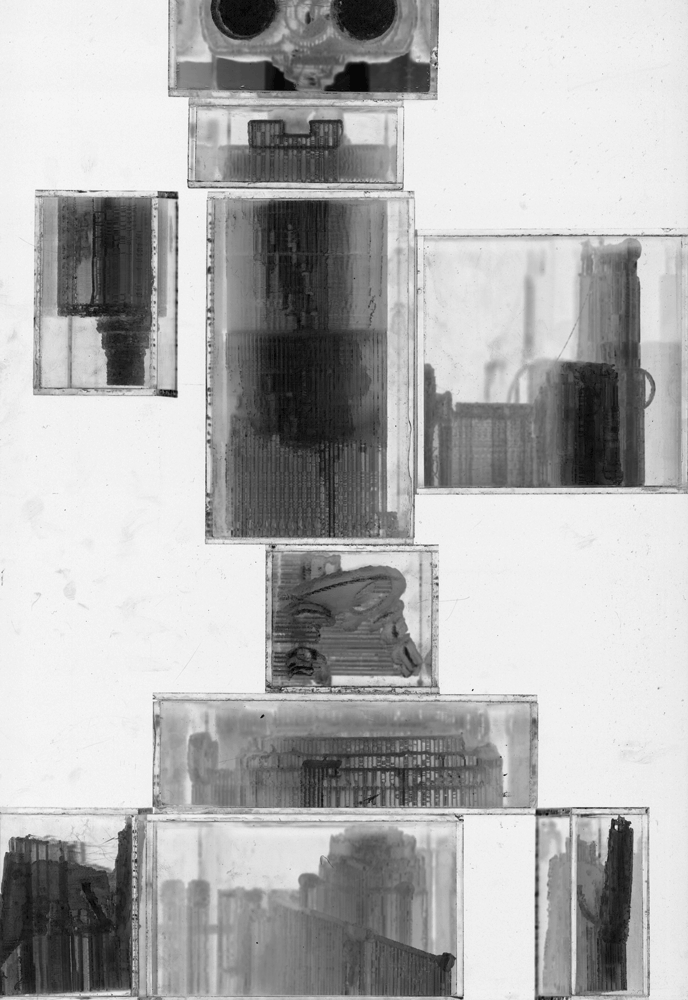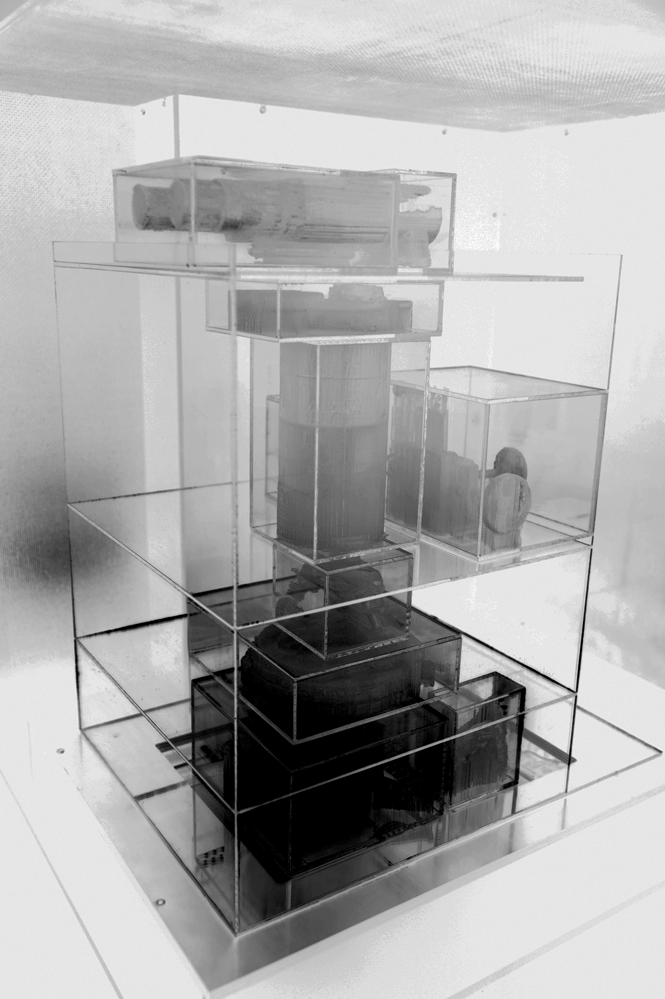
A Prismatic Compound Microscope
There are unmistakable similarities in
material, dimension and construction shared by scientist Royal
Rife's prismatic compound microscope (No. 5, 1938) and artist László
Moholy-Nagy's Nickel Construction (1921).
The upper part of Nickel Construction is a spiral welded to the vertical axis of the
sculpture. The upper part of the prismatic compound microscope holds
an eye piece through which the researcher using the instrument
studies a specimen. Any observation carried out through
the microscope will have a top-down orientation. When the light
source—in the case of this particular microscope, a light bulb
called the arch-light—illuminates the specimen-plate, the light is
inverted because it travels from the bottom to the top of the
microscope.
How is perception working? Is it
that the researcher is looking down with the direction of sight thus
moving from the eye to the specimen, or is it that the light is
travelling up, bringing the experience of vision from the specimen
to the eye?
If we go back to Nickel Construction, the sculpture by Moholy-Nagy, we can see that
the metallic spiral turns vertically from the top to the bottom,
ending at the right front corner of the base. Its trajectory in
space is like the motion of vision that is happening during the
researchers use of the microscope for observation. Nickel Construction can be looked at as a model of augmented
perception: a model of the way perception is extended through the
use of an instrument that is not technically part of the body but
that the nervous system transforms into an extension of itself.
The extruded oval rectangle fixed on the base of Nickel Construction, seen just to the right of
the vertical axis of the sculpture, can also be likened to the
specimen-plate on the microscope since both are similarly positioned on their respective structures.
The third object shares some
similarities with the two previously described, but is quite
different. In terms of materials, it is very distinct, made of
PLA (a kind of thermoplastic), glass, and glue. In terms of
construction, this third object is a replica of sorts, created by
scanning the various individual components of the already existing
compound microscope; yet, in the process of scanning, it is also the
case that information was lost, creating gaps in the details of the
various components when the rendered objects were printed. This
creates a fossil-like appearance.


As far as tectonics is concerned, the
various components are not fixed together in the third object as
they are in the other two, but are rather arranged through a
shelf-system created by individual glass boxes that hold each part
of the structure like autonomous figures. The glass boxes
reflect light and diffuse it around the sculpture. The boxes
could be rearranged to create a different object, in some ways
making this third object more similar to Nickel Construction
than to the microscope from which it took information as a
quasi-replica. This third object occupies the space of
neither-nor.
fig.1. (left) Moholy-Nagy, László.
Nickel
Construction
. 1921. [Sculpture]. Dimensions: 14 1/8 x 6 7/8 x
9 3/8 in. (35.9 x 17.5 x 23.8 cm). Gift of Mrs. Sibyl Moholy-Nagy.
The Museum of Modern Art, New York. Artstor.
fig.2. (right) Richardson, Claire.
Rife's prismatic compound microscope No 5. [Scientific instrument]
1938. © Science Museum / Science Society Picture Library Image Ref:
10327360. Description: Microscope No 5. is one of the five
instruments designed and built by American-born Royal Raymond Rife,
who worked on the making of lenses and microscopes in Germany before
returning to America. Papers held at the Science Museum imply that
Rife No 5. was used for studying viruses and cancer-causing
organisms, but tests in 1978 suggested the microscope was not
remarkable, and in fact only after replacing the original optics was
a very imperfect image of leukemic blood cells finally obtained.
fig.3-4. Blazsek, A. 3D print [replica of the microscope No 5.]